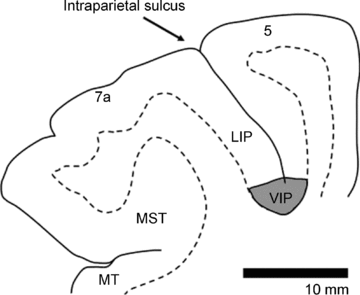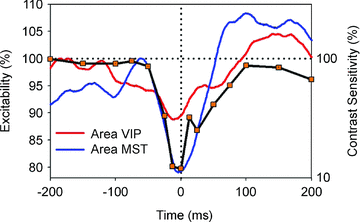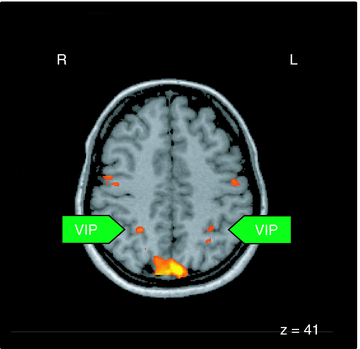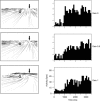Multisensory space: from eye-movements to self-motion
- PMID: 20921203
- PMCID: PMC3060361
- DOI: 10.1113/jphysiol.2010.195537
Multisensory space: from eye-movements to self-motion
Abstract
We perceive the world around us as stable. This is remarkable given that our body parts as well as we ourselves are constantly in motion. Humans and other primates move their eyes more often than their hearts beat. Such eye movements lead to coherent motion of the images of the outside world across the retina. Furthermore, during everyday life, we constantly approach targets, avoid obstacles or otherwise move in space. These movements induce motion across different sensory receptor epithels: optical flow across the retina, tactile flow across the body surface and even auditory flow as detected from the two ears. It is generally assumed that motion signals as induced by one's own movement have to be identified and differentiated from the real motion in the outside world. In a number of experimental studies we and others have functionally characterized the primate posterior parietal cortex (PPC) and its role in multisensory encoding of spatial and motion information. Extracellular recordings in the macaque monkey showed that during steady fixation the visual, auditory and tactile spatial representations in the ventral intraparietal area (VIP) are congruent. This finding was of major importance given that a functional MRI (fMRI) study determined the functional equivalent of macaque area VIP in humans. Further recordings in other areas of the dorsal stream of the visual cortical system of the macaque pointed towards the neural basis of perceptual phenomena (heading detection during eye movements, saccadic suppression, mislocalization of visual stimuli during eye movements) as determined in psychophysical studies in humans.
Figures







References
-
- Andersen RA, Snyder LH, Li C-S, Stricanne B. Coordinate transformations in the representation of spatial information. Curr Opin Neurobiol. 1993;3:171–176. - PubMed
-
- Bellebaum C, Daum I, Koch B, Schwarz M, Hoffmann KP. The role of the human thalamus in processing corollary discharge. Brain. 2005;128:1139–1154. - PubMed
-
- Boussaoud D, Bremmer F. Gaze effects in the cerebral cortex: reference frames for space coding and action. Exp Brain Res. 1999;128:170–180. - PubMed
-
- Bremmer F, Duhamel J-R, Ben Hamed S, Graf W. Heading encoding in the macaque ventral intraparietal area (VIP) Eur J Neurosci. 2002a;16:1554–1568. - PubMed
-
- Bremmer F, Graf W, Ben Hamed S, Duhamel JR. Eye position encoding in the macaque ventral intraparietal area (VIP) Neuroreport. 1999a;10:873–878. - PubMed
Publication types
MeSH terms
LinkOut - more resources
Full Text Sources
Medical

